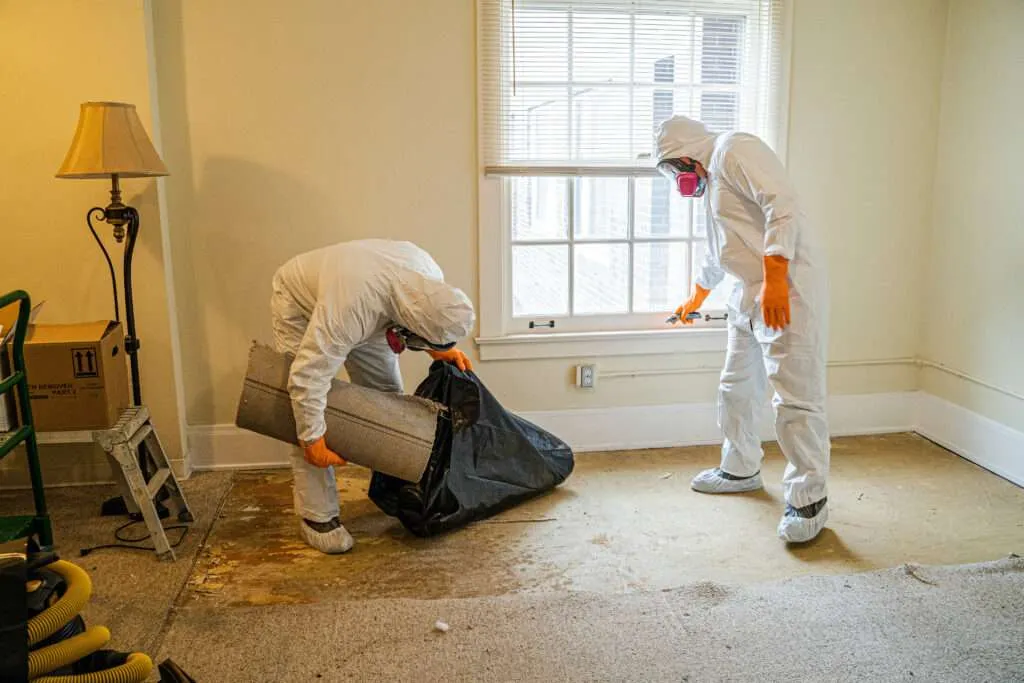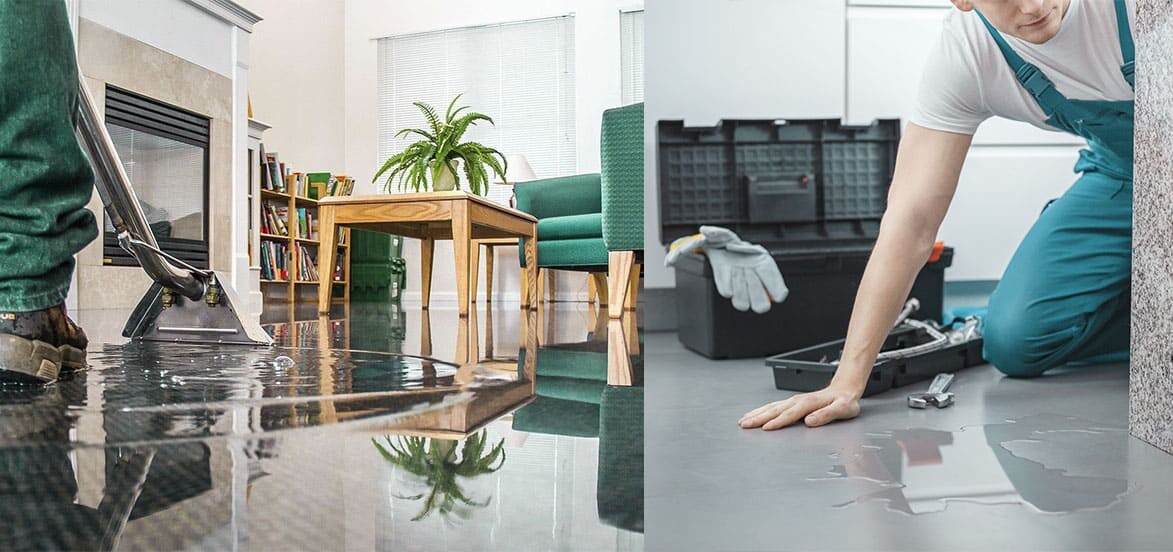Water Damage Restoration 101: Comprehending the Process and Price
Water damage can strike all of a sudden, leaving homeowners in a state of confusion. Comprehending the repair procedure is crucial for reliable recovery. From evaluating the damage to choosing the best solution supplier, each action impacts the overall outcome and cost. Factors such as the kind of water damage and necessity likewise play a substantial function. What are the certain methods used in reconstruction, and how can one plan for prospective expenditures?
Sorts Of Water Damage
Water damage can develop from different sources, each presenting one-of-a-kind obstacles for repair. The three key kinds of water damage are classified based on contamination levels: tidy water, grey water, and black water. Clean water originates from resources like damaged pipes or rainwater, posing minimal wellness dangers. Gray water, that includes wastewater from sinks or washing equipments, consists of pollutants that may cause pain or health problem if ingested. Black water, one of the most harmful classification, comes from sewer or floodwaters, including damaging bacteria and microorganisms. Each kind demands details reconstruction methods and safety actions to effectively mitigate and resolve the damage health and wellness threats. Comprehending these distinctions is vital for homeowners and specialists associated with the water damage repair procedure.
First Evaluation and Examination
A thorough initial evaluation and assessment are essential steps in the water damage remediation procedure. This stage starts with a specialist evaluating the extent of the damage, identifying the source of the water intrusion, and identifying the sort of water entailed - Flood Cleanup Services. Technicians utilize specialized devices to determine wetness levels in different products, such as wall surfaces, floorings, and furnishings. Furthermore, they examine architectural honesty and possible carcinogen, consisting of mold and mildew development. The findings from this assessment inform the repair strategy, leading essential activities and resource allocation. Accurate documents of the damage is crucial for insurance cases and future referral. On the whole, this first analysis lays the foundation for efficient remediation, making sure a comprehensive response to the specific scenario available

Water Removal Methods
Following the first evaluation, effective water removal methods are employed to minimize damage and protect against additional issues. These techniques entail using specialized tools such as industrial-grade vacuum cleaners and completely submersible pumps. The option of method depends on the volume of water existing and the kind of materials influenced. For standing water, submersible pumps are generally used for quick elimination, while vacuums are excellent for removing water from carpets and furniture. Furthermore, advanced approaches like water extraction floor coverings might be utilized for hard-to-reach locations. The goal is to eliminate as much water as feasible, reducing the possibility for mold development and architectural damage. Prompt and effective water removal is vital in the total water damage remediation process.
Drying Out and Dehumidification Process
Once the water extraction is total, the drying and dehumidification process comes to be important to recovering the afflicted location. This phase generally uses industrial-grade dehumidifiers and air movers to properly decrease moisture levels. The dehumidifiers reel in wet air, removing excess humidity, while air moving companies flow air to speed up dissipation. Monitoring tools is frequently used to track moisture and temperature level levels, making sure ideal drying conditions. The duration of this process can vary depending upon the degree of the water damage and ecological factors. It is vital to extensively completely dry all influenced products, consisting of wall surfaces, floor covering, and home furnishings, to stop mold and mildew her comment is here growth and structural damage. Appropriate implementation of this action is essential for an effective restoration outcome.
Cleaning Up and Sanitizing Affected Locations

First Evaluation and Inspection
Prior to starting any type of restoration initiatives, a detailed preliminary assessment and inspection of the influenced locations are important for effective cleansing and sterilizing. This procedure entails recognizing the degree of water damage, identifying the resource of the water intrusion, and reviewing the materials influenced. Inspectors normally look for indications of mold and mildew development, architectural stability issues, and harmed possessions. The evaluation additionally includes inspecting dampness degrees using specific tools to guarantee no covert water pockets continue to be, as these can cause further problems. Recording the searchings for is essential for planning the next action in the reconstruction procedure. A comprehensive preliminary analysis allows reconstruction experts to design a targeted strategy for effective cleaning and disinfecting, ultimately lessening damage and health dangers.
Cleansing Strategies and Products
Effective cleansing and sanitizing of water-damaged locations call for a selection of strategies and items customized to the certain materials impacted. For porous surfaces like drywall and carpets, removal methods are necessary to get rid of excess dampness, followed by deep cleaning with specialized detergents. Non-porous materials such as ceramic tile or steel can be cleansed making use of commercial-grade cleansers that properly get rid of impurities. Heavy steam cleaning is another reliable strategy, especially for rugs and upholstery, as it uses high temperature levels to get rid of microorganisms and mold and mildew. Furthermore, environmentally friendly products are increasingly preferred for their safety and efficacy. Inevitably, picking the proper cleaning methods and items not only assures instant tidiness yet likewise aids in protecting against additional damage and carcinogen related to water intrusion.
Sanitization and Disinfection Approaches
When attending to water damage, proper sanitization and sanitation methods are important to guarantee the safety and health of the damaged atmosphere. After initial cleaning, surfaces must be treated with suitable disinfectants to eliminate virus, mold, and bacteria that grow in moist conditions. Usual methods include making use of EPA-approved chemical disinfectants, which can be used with spraying or wiping methods. In addition, ultraviolet (UV) light systems can successfully disinfect areas by counteracting microorganisms without severe chemicals. The selection of method commonly depends on the type of products affected and the extent of contamination. Eventually, comprehensive sanitization not only brings back a safe living room but additionally helps stop future wellness risks related to remaining dampness and mold and mildew development.

Repair Services and Restoration Options

Elements Affecting Restoration Costs
The extent of water damage straight affects the restoration costs property owners can anticipate to incur. Elements such as the source of the water, the duration of direct exposure, and the afflicted materials considerably influence rates. As an example, tidy water damage from a busted pipe is generally less pricey to bring back contrasted to damage triggered by sewage. Furthermore, the level of contamination dictates the requirement for specialized cleansing and disposal solutions, even more enhancing expenditures. Geographic area additionally plays a function, as local labor rates and availability of reconstruction services can differ. The necessity of the reaction impacts expenses; quicker interventions commonly lead to decrease total expenditures by preventing additional damage. Comprehending these factors is vital for homeowners when approximating remediation prices
The three main types of water damage are classified based on contamination degrees: clean water, gray water, and black water. An extensive preliminary assessment and examination are crucial steps in the water damage remediation process. For standing water, submersible pumps are usually used for fast elimination, while vacuums are optimal for extracting water from carpetings and upholstery. The level of water damage straight influences the remediation costs homeowners can anticipate to sustain. Clean water damage from a busted pipeline is usually less pricey to bring back compared to damage created by sewer.